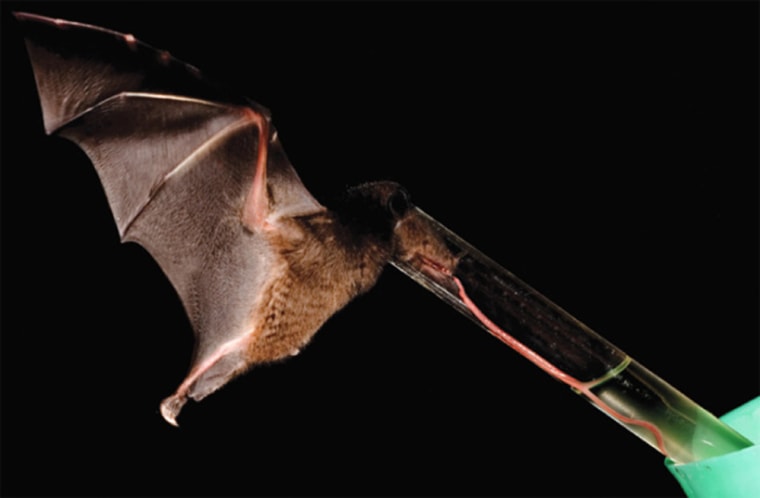One nectar bat can launch its tongue one and a half times its body length, longer than any other mammal and second only to chameleons among vertebrates, scientists recently discovered.
The tube-lipped nectar bat (Anoura fistulata) was discovered in the cloud forests of the Andes of Ecuador, and first described last year.
But it wasn’t until recently that scientists realized the tongue of this bat extends twice as far as its family members. They suggest this long licker evolved to feed on a flower where the nectar is hidden at the end of equally long funnels. That gives the nectar bat sole pollinating rights to the flower.
Like its two relatives that also live in the region, Anoura fistulata flits from bloom to bloom, spending just half a second dipping its tongue about seven times into the flower tube for nectar and inadvertently picking up pollen on its snout. The pollen grains get delivered to the next flower visited.
Scientists led by Nathan Muchhala of the University of Miami studied the tube-lipped bat and two other nectar bat species by capturing and training them to drink sugared water through a straw. With video observations and pollen collected from their fur, they found that the tube-lipped bat was the exclusive pollinator of an elongated bell-shaped flower.
Whereas the two other nectar bats could protrude their tongues up to 1.5 inches, Anoura fistulata showed a record-breaking extension of about 3.4 inches.
Strong bite
Even more surprising, Muchhala pointed out, the tube-lipped nectar bat came up with an ingenious way of evolving a longer tongue without the usual drawbacks. Just like humans, in bats the tongue begins at the base of the mouth, so the only way to stretch tongue length would be to grow an equally long snout. Tongue length correlated with snout length for 10 other nectar species, the researchers found.
That’s not the case for the tube-lipped bat. “Instead of evolving a longer jaw, it pushed the base of the tongue back and into the rib cage,” Muchhala told LiveScience. Its tongue gets stowed between the heart and sternum.
A bat’s jaw works like a lever, so the farther away the biting teeth are from the base of the mouth, where force is applied, the weaker a bat’s bite. Without a snappy bite, a bat wouldn’t be able to supplement its sugary diet with protein-packed insects. The tube-lipped bat, it seems, gets the best of both worlds — a far-reaching tongue and a short snout. In fact, the scientists found insect parts in the bat’s fecal matter.
Muchhala suspects the bell-shaped flower and this nectar bat co-evolved, or influenced each other and evolved side-by-side. “This bat was just discovered last year, and now we’ve observed a very unique relationship with a local flower,” Muchhala said.
To confirm, he plans to measure snout length of tube-lipped nectar bats in different areas. If the bats have shorter tongues in areas where the local flowers have diminutive tubes and longer tongues with lengthier flowers, the finding would support co-evolution.
An earlier version of this report misstated the precise length of the bat's tongue.
